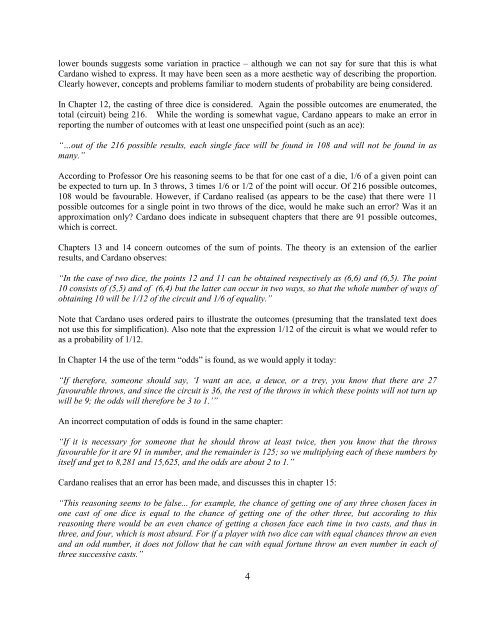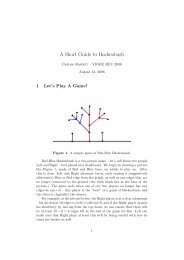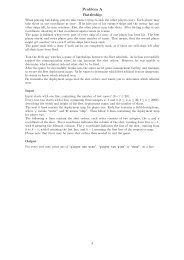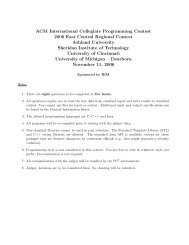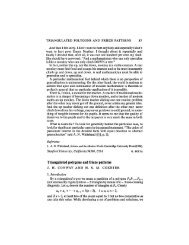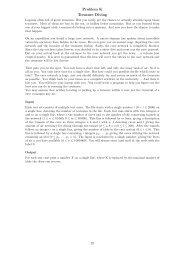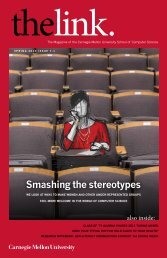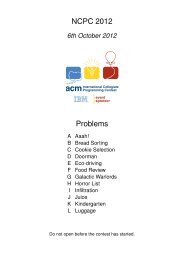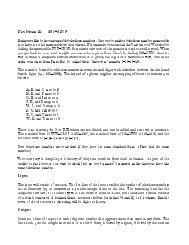Review1 of Liber De Ludo Aleae (Book on Games of Chance) by ...
Review1 of Liber De Ludo Aleae (Book on Games of Chance) by ...
Review1 of Liber De Ludo Aleae (Book on Games of Chance) by ...
You also want an ePaper? Increase the reach of your titles
YUMPU automatically turns print PDFs into web optimized ePapers that Google loves.
lower bounds suggests some variati<strong>on</strong> in practice – although we can not say for sure that this is what<br />
Cardano wished to express. It may have been seen as a more aesthetic way <str<strong>on</strong>g>of</str<strong>on</strong>g> describing the proporti<strong>on</strong>.<br />
Clearly however, c<strong>on</strong>cepts and problems familiar to modern students <str<strong>on</strong>g>of</str<strong>on</strong>g> probability are being c<strong>on</strong>sidered.<br />
In Chapter 12, the casting <str<strong>on</strong>g>of</str<strong>on</strong>g> three dice is c<strong>on</strong>sidered. Again the possible outcomes are enumerated, the<br />
total (circuit) being 216. While the wording is somewhat vague, Cardano appears to make an error in<br />
reporting the number <str<strong>on</strong>g>of</str<strong>on</strong>g> outcomes with at least <strong>on</strong>e unspecified point (such as an ace):<br />
“…out <str<strong>on</strong>g>of</str<strong>on</strong>g> the 216 possible results, each single face will be found in 108 and will not be found in as<br />
many.”<br />
According to Pr<str<strong>on</strong>g>of</str<strong>on</strong>g>essor Ore his reas<strong>on</strong>ing seems to be that for <strong>on</strong>e cast <str<strong>on</strong>g>of</str<strong>on</strong>g> a die, 1/6 <str<strong>on</strong>g>of</str<strong>on</strong>g> a given point can<br />
be expected to turn up. In 3 throws, 3 times 1/6 or 1/2 <str<strong>on</strong>g>of</str<strong>on</strong>g> the point will occur. Of 216 possible outcomes,<br />
108 would be favourable. However, if Cardano realised (as appears to be the case) that there were 11<br />
possible outcomes for a single point in two throws <str<strong>on</strong>g>of</str<strong>on</strong>g> the dice, would he make such an error? Was it an<br />
approximati<strong>on</strong> <strong>on</strong>ly? Cardano does indicate in subsequent chapters that there are 91 possible outcomes,<br />
which is correct.<br />
Chapters 13 and 14 c<strong>on</strong>cern outcomes <str<strong>on</strong>g>of</str<strong>on</strong>g> the sum <str<strong>on</strong>g>of</str<strong>on</strong>g> points. The theory is an extensi<strong>on</strong> <str<strong>on</strong>g>of</str<strong>on</strong>g> the earlier<br />
results, and Cardano observes:<br />
“In the case <str<strong>on</strong>g>of</str<strong>on</strong>g> two dice, the points 12 and 11 can be obtained respectively as (6,6) and (6,5). The point<br />
10 c<strong>on</strong>sists <str<strong>on</strong>g>of</str<strong>on</strong>g> (5,5) and <str<strong>on</strong>g>of</str<strong>on</strong>g> (6,4) but the latter can occur in two ways, so that the whole number <str<strong>on</strong>g>of</str<strong>on</strong>g> ways <str<strong>on</strong>g>of</str<strong>on</strong>g><br />
obtaining 10 will be 1/12 <str<strong>on</strong>g>of</str<strong>on</strong>g> the circuit and 1/6 <str<strong>on</strong>g>of</str<strong>on</strong>g> equality.”<br />
Note that Cardano uses ordered pairs to illustrate the outcomes (presuming that the translated text does<br />
not use this for simplificati<strong>on</strong>). Also note that the expressi<strong>on</strong> 1/12 <str<strong>on</strong>g>of</str<strong>on</strong>g> the circuit is what we would refer to<br />
as a probability <str<strong>on</strong>g>of</str<strong>on</strong>g> 1/12.<br />
In Chapter 14 the use <str<strong>on</strong>g>of</str<strong>on</strong>g> the term “odds” is found, as we would apply it today:<br />
“If therefore, some<strong>on</strong>e should say, ‘I want an ace, a deuce, or a trey, you know that there are 27<br />
favourable throws, and since the circuit is 36, the rest <str<strong>on</strong>g>of</str<strong>on</strong>g> the throws in which these points will not turn up<br />
will be 9; the odds will therefore be 3 to 1.’”<br />
An incorrect computati<strong>on</strong> <str<strong>on</strong>g>of</str<strong>on</strong>g> odds is found in the same chapter:<br />
“If it is necessary for some<strong>on</strong>e that he should throw at least twice, then you know that the throws<br />
favourable for it are 91 in number, and the remainder is 125; so we multiplying each <str<strong>on</strong>g>of</str<strong>on</strong>g> these numbers <strong>by</strong><br />
itself and get to 8,281 and 15,625, and the odds are about 2 to 1.”<br />
Cardano realises that an error has been made, and discusses this in chapter 15:<br />
“This reas<strong>on</strong>ing seems to be false... for example, the chance <str<strong>on</strong>g>of</str<strong>on</strong>g> getting <strong>on</strong>e <str<strong>on</strong>g>of</str<strong>on</strong>g> any three chosen faces in<br />
<strong>on</strong>e cast <str<strong>on</strong>g>of</str<strong>on</strong>g> <strong>on</strong>e dice is equal to the chance <str<strong>on</strong>g>of</str<strong>on</strong>g> getting <strong>on</strong>e <str<strong>on</strong>g>of</str<strong>on</strong>g> the other three, but according to this<br />
reas<strong>on</strong>ing there would be an even chance <str<strong>on</strong>g>of</str<strong>on</strong>g> getting a chosen face each time in two casts, and thus in<br />
three, and four, which is most absurd. For if a player with two dice can with equal chances throw an even<br />
and an odd number, it does not follow that he can with equal fortune throw an even number in each <str<strong>on</strong>g>of</str<strong>on</strong>g><br />
three successive casts.”<br />
4


